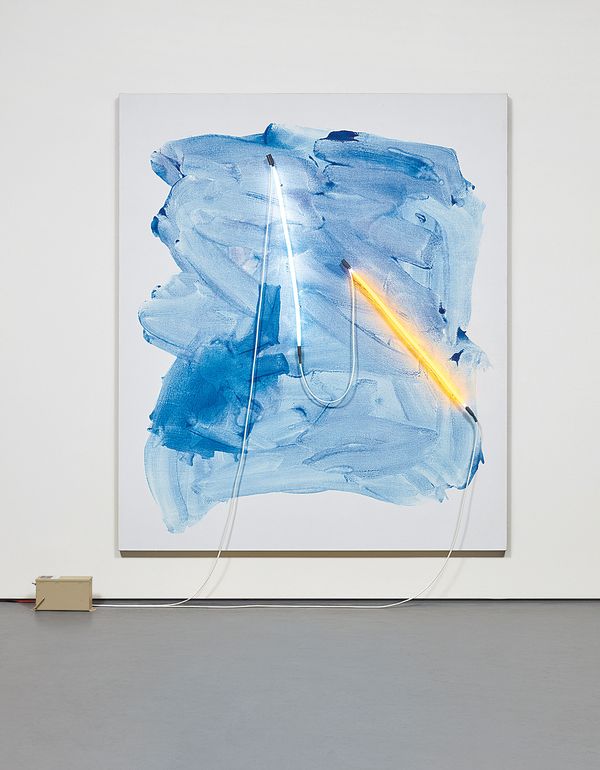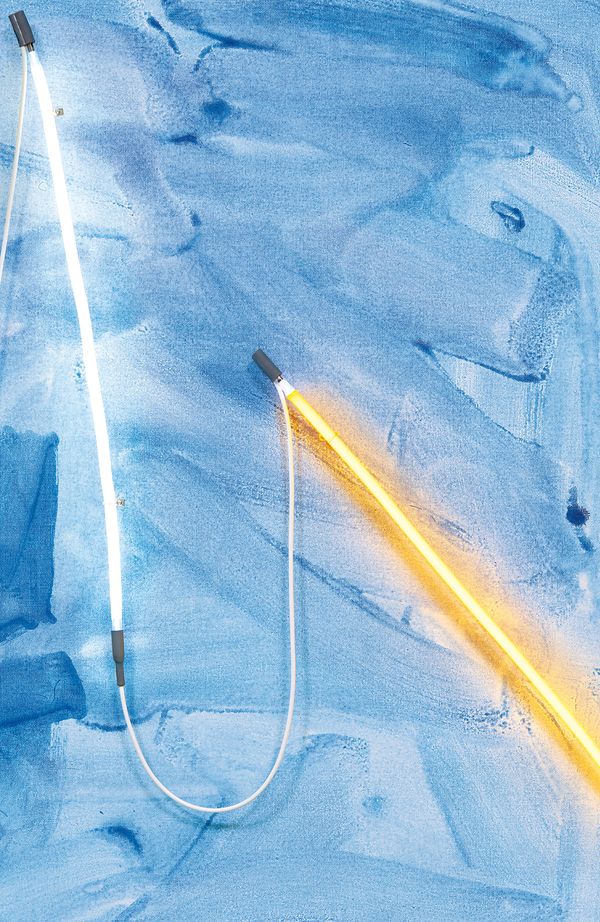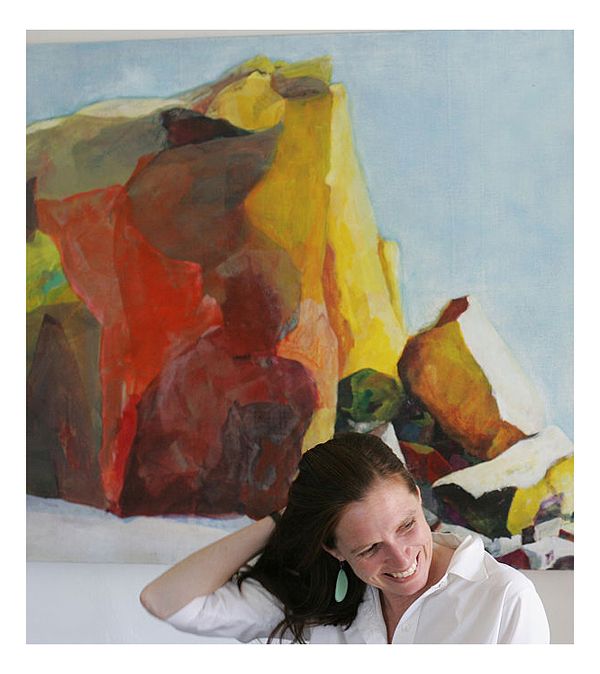Mary Weatherford Truxtun, 2012
I’ve discovered that the city is light. Without light we don’t have a city. — Mary Weatherford
Arresting and color-driven, Truxtun belongs to Mary Weatherford’s most celebrated series of neon paintings inspired by her experience within the uniqueness of city landscapes. Executed in 2012, this work is part of The Bakersfield Project series and is one of the first to feature neon rods—a career-altering experimentation that has featured in the artist's work ever since.
Throughout this series, Weatherford utilizes diluted Flashe paint to create a translucent effect that forms a gradient of richness in hue. Inspired by Helen Frankenthaler’s techniques, Weatherford integrates her mixed media to create a harmonization of color. Elevating this subdued aesthetic, two delicate bands of neon stretch across the canvas and beam above the color field with an eye-catching illumination that adds depth and vigor. Weatherford chooses to showcase the transformer and power cords as an essential part of the piece. Rather than hiding them, she elegantly drapes them over the canvas and makes them an integral compositional element.
You can’t look at the painting and look at the light at the same time…there’s a perceptual oddity when you are looking straight at it.
Truxtun illuminates Weatherford’s intimate experience within the diverse environs of Bakersfield, California, a city about 100 miles north of Los Angeles. The bright white and warm yellow glow of the neon contrasts with the cool airy blue in a seamless combination reminiscent of the peculiar and particular dichotomy of nature and industry in Bakersfield. Weatherford’s artful tubes romanticize the dilapidated neon signs that stand starkly erect over the placid Bakersfield sky. So striking are they that they draw the viewer’s attention back and forth from the wash of color that lies below.
Mary Weatherford as seen in her studio in 2008. A similar painting in Flashe on canvas, end of days, 2004, sold at Phillips New York in May 2016. The paintings in this series predate her experimentation with neon.
Weatherford’s work focuses on conjuring emotions similar to those felt when repeatedly driving the same road and passing by familiar city lights. She reflects, as quoted in “From the Mountain to the Sea: A Conversation”, in The Neon Paintings: Mary Weatherford, Munich, 2016: “I started getting interested in roads and how roads make my life, and everybody’s. We travel on these roads that have been made, and then there’s a pattern. […] What if the 10 Freeway were someplace else? Then you’d have a different life.”
Weatherford draws from her personal experiences with landscape and brings them to the surface through her evocative compositions — perfectly embodied in Truxtun.



